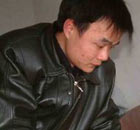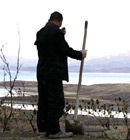Photo
Rescuers tear as Haiti's miracle survivors are freed
(Agencies)
Updated: 2010-01-20 21:21
 |
Large Medium Small |
A 69-year-old ardent Roman Catholic who said she prayed constantly during her week under the rubble was among the unlikely survivors of the epic Haitian earthquake.
One full week after the magnitude-7 quake killed an estimated 200,000, left 250,000 injured and made 1.5 million homeless, search-and-rescue teams were emerging from the ruins with improbable success stories. Experts have said that without water, buried quake victims were unlikely to survive beyond three days.
Ena Zizi had been at a church meeting at the residence of Haiti's Roman Catholic archbishop when the quake struck, trapping her in debris. On Tuesday, she was rescued by a Mexican disaster team that was created in the wake of Mexico City's 1985 earthquake.
Rescue workers wept and hugged each other as the woman, caked in debris and dust, was placed on a makeshift stretcher, put on a drip, covered with a heat-conserving wrap and driven by truck to a hospital, witnesses said.
"I talked only to my boss, God," she said. "And I didn't need any more humans."
Doctors who examined Zizi on Tuesday said she was dehydrated and had a dislocated hip and a broken leg.
"I'm all right, sort of," she said, lying on a foil thermal blanket outside the Cuban hospital, her gray hair covered in white dust.
Elsewhere in the capital, two women were pulled from a destroyed university building. And near midnight Tuesday, a smiling and singing 26-year-old Lozama Hotteline was carried to safety from a collapsed store in the Petionville neighborhood by the French aid group Rescuers Without Borders.
Crews at the cathedral compound site Tuesday managed to recover the body of the archbishop, Monsignor Joseph Serge Miot, who was killed in the January 12 quake.
Authorities said close to 100 people had been pulled from wrecked buildings by international search-and-rescue teams. Efforts continued, with dozens of teams sifting through Port-au-Prince's crumbled homes and buildings for signs of life.













